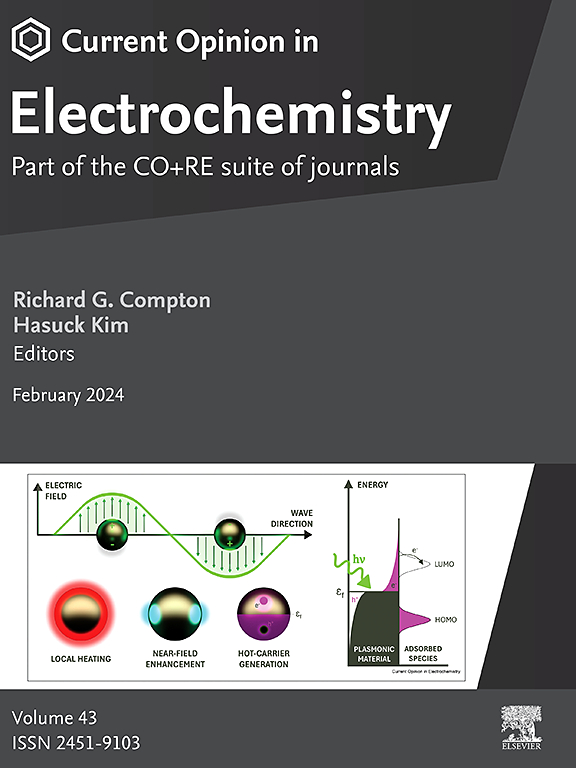Electrocatalysis beyond the reversible hydrogen electrode
IF 6.9
2区 化学
Q1 CHEMISTRY, PHYSICAL
引用次数: 0
Abstract
The reversible and computational hydrogen electrodes have proven invaluable as reference electrodes in aqueous electrocatalysis, allowing an evaluation of the combined chemical potential of the proton–electron pair in experiments and computations. By construction, they cancel the pH dependence in most capacitive processes. However, for electrocatalysis, which is dominated by faradaic processes, this characteristic is rarely observed.
In this short review, we discuss the origins of deviations from the Nernstian behavior in capacitive and faradaic processes, their manifestation in experimental observables, and attempts to incorporate them in simulations. On this basis, we discuss how deviations from Nernstian behavior can be exploited in mechanistic analysis and highlight the use of electrostatic descriptors in computational screening to account for non-Nernstian effects explicitly.
可逆氢电极以外的电催化
可逆和可计算的氢电极已被证明是水电催化中宝贵的参考电极,允许在实验和计算中评估质子-电子对的组合化学势。通过结构,它们消除了大多数电容过程中的pH依赖。然而,对于以法拉第过程为主的电催化,很少观察到这种特性。在这篇简短的综述中,我们讨论了电容和法拉第过程中偏离能斯特行为的起源,它们在实验观察中的表现,并试图将它们纳入模拟。在此基础上,我们讨论了如何在机制分析中利用与能态行为的偏差,并强调了在计算筛选中使用静电描述符来明确地解释非能态效应。
本文章由计算机程序翻译,如有差异,请以英文原文为准。
求助全文
约1分钟内获得全文
求助全文
来源期刊

Current Opinion in Electrochemistry
Chemistry-Analytical Chemistry
CiteScore
14.00
自引率
5.90%
发文量
272
审稿时长
73 days
期刊介绍:
The development of the Current Opinion journals stemmed from the acknowledgment of the growing challenge for specialists to stay abreast of the expanding volume of information within their field. In Current Opinion in Electrochemistry, they help the reader by providing in a systematic manner:
1.The views of experts on current advances in electrochemistry in a clear and readable form.
2.Evaluations of the most interesting papers, annotated by experts, from the great wealth of original publications.
In the realm of electrochemistry, the subject is divided into 12 themed sections, with each section undergoing an annual review cycle:
• Bioelectrochemistry • Electrocatalysis • Electrochemical Materials and Engineering • Energy Storage: Batteries and Supercapacitors • Energy Transformation • Environmental Electrochemistry • Fundamental & Theoretical Electrochemistry • Innovative Methods in Electrochemistry • Organic & Molecular Electrochemistry • Physical & Nano-Electrochemistry • Sensors & Bio-sensors •
 求助内容:
求助内容: 应助结果提醒方式:
应助结果提醒方式:


